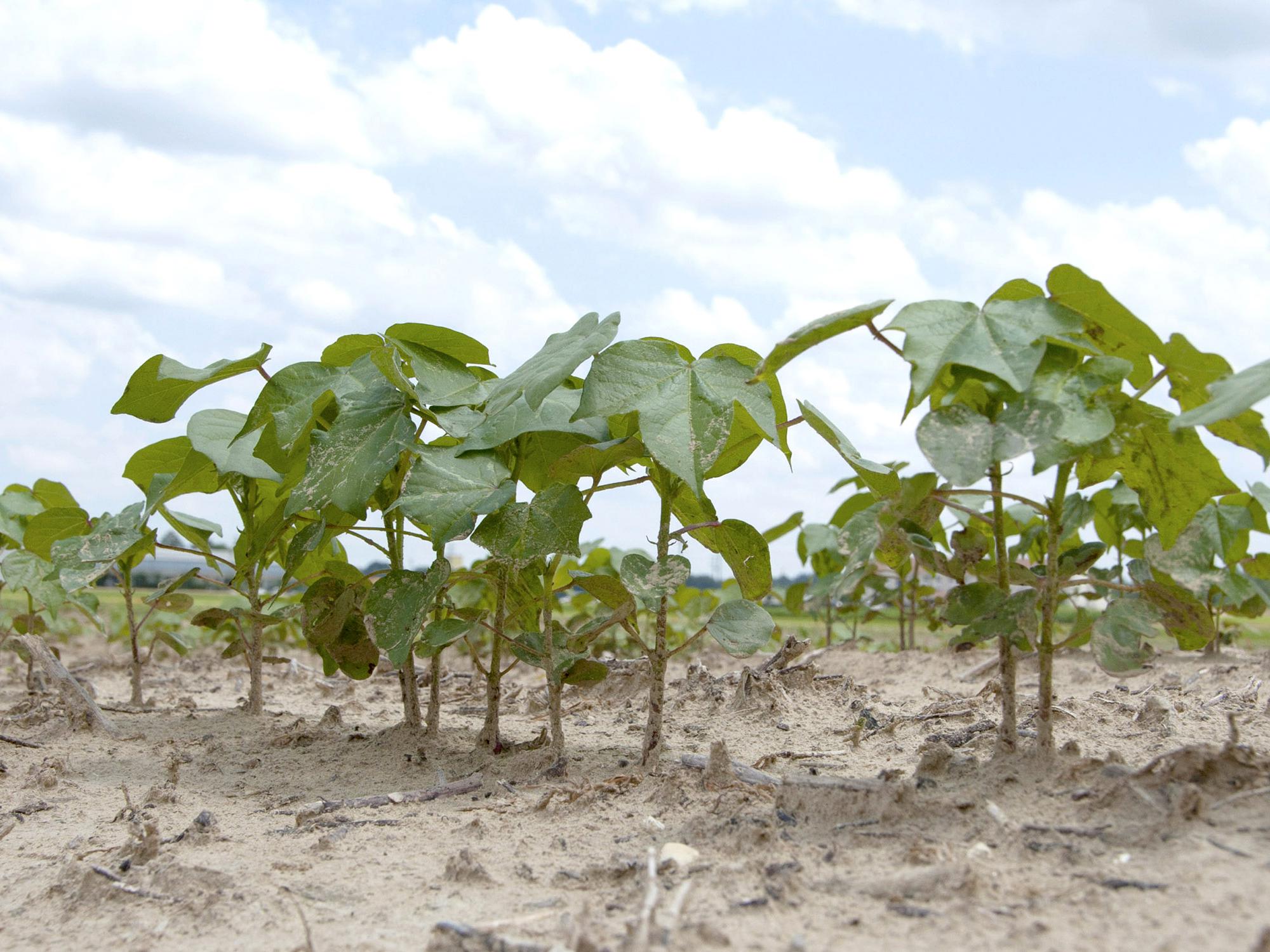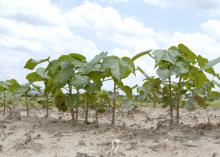Information Possibly Outdated
The information presented on this page was originally released on June 7, 2013. It may not be outdated, but please search our site for more current information. If you plan to quote or reference this information in a publication, please check with the Extension specialist or author before proceeding.
State's cotton gains ground in planting
MISSISSIPPI STATE – A week of mostly ideal weather allowed Mississippi producers to more than double the acreage planted in cotton, but they remain behind schedule with this year’s crop.
The U.S. Department of Agriculture estimated the cotton crop went from 36 to 77 percent planted in the week ending June 2, and many days were favorable since then. The state typically has 93 percent of its cotton acreage planted by this time, but the situation is not quite as bleak as it had been.
Darrin Dodds, cotton specialist with the Mississippi State University Extension Service, said growers made up a lot of ground after Memorial Day.
“It’s amazing how quickly soil went from way too wet to dry,” Dodds said. “It finally got hot, the wind started blowing, and the ground dried up quickly. Producers across the state were able to get a lot of planting done this week.”
USDA originally estimated that cotton acreage would drop to 199,000, but when weather delayed corn planting, that prediction increased to 340,000 acres of cotton. However, continuing wet weather delayed cotton planting, and Dodds said he now expects the state to have about 300,000 acres of cotton when the planting window closes.
“It’s been a challenging year just getting the crop planted, and we’ve seen as much as 20 percent of the acreage replanted,” Dodds said. “As soon as the ground was dry enough for equipment to get across it, cotton was planted. But shortly after that, we got a hard, packing rain, and then it dried out. Much of the cotton just couldn’t get through this hard layer and had to be replanted.”
Once the last of the cotton has been planted or replanted, growers will focus their efforts on helping it mature as quickly as possible.
Angus Catchot, Extension agronomic crops entomologist, said managing insect pressure can help the cotton stay on track. Significant insect pressure can delay the crop as the plants put time and energy into foliage rather than boll production.
“Thrips have already become a problem in cotton, but this is not unusual. Thrips are a problem from emergence until the plants get about four true leaves,” Catchot said. “Thrips are less of an issue when cotton is growing quickly, but this year, the cotton is just getting started.”
Growers are encouraged to aggressively treat thrips so these insects do not delay the crop. Catchot said once thrips are in check, spider mites often become an issue, and growers must spray crops to prevent problems from this insect.
“We’ve got a lot of data that suggests that anytime you push the cotton crop late in the Midsouth, it exposes us to bigger populations of insects that have had time to build,” Catchot said. “As the season progresses, these insects are harder to control.”
Don Respess, Extension director in Coahoma County, said farmers are somewhat discouraged and concerned about the late start to the cotton crop. Coahoma County historically grows more cotton than any other county in Mississippi.
“Folks are really down in the mouth. We’ve had two tremendous crops in the last two years, and they think that whatever they’re able to plant now won’t make a harvest like that,” Respess said.
He said he expects growers in the county to plant 40,000 to 50,000 acres of cotton, which is higher than originally anticipated but lower than the typical 65,000 acres planted.
“Earlier this spring, we thought we’d see more corn than cotton for the first time in Coahoma County’s history, but many acres of corn didn’t get planted, so that didn’t happen,” Respess said. “We’re a cotton county.”
Even in the Delta, cotton planting has reached the end of its ideal planting window. Acreage that remains unplanted past the first week of June likely will be planted in soybeans.




